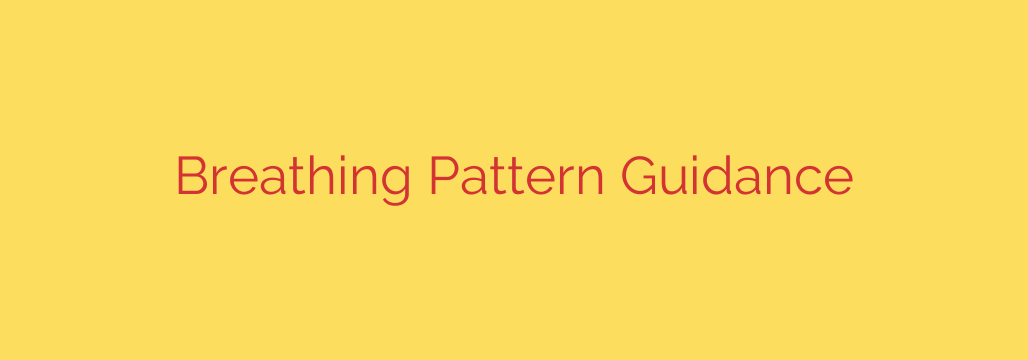
Your Breath is Your New Password: The Future of Biometric Security
For years, we’ve been told that the future of security lies beyond simple passwords. We’ve moved to fingerprints, facial recognition, and voice commands. But what if the next leap in digital protection is something you’re already doing, thousands of time a day, without a single thought? What if your next password is your own breath?
This isn’t science fiction. A cutting-edge form of biometric technology, known as breathing pattern authentication, is emerging as one of the most secure and seamless ways to verify your identity. By analyzing the unique rhythm and flow of your respiration, systems can confirm you are who you say you are with incredible accuracy.
What is Breathing Pattern Authentication?
Just like your fingerprint or the iris of your eye, the way you breathe is a unique physiological trait. The combination of lung capacity, diaphragm strength, and the subtle nuances of your respiratory cycle creates a distinct pattern—a “respiratory signature”—that is extremely difficult to replicate.
Breathing pattern authentication uses sophisticated sensors to measure the tiny changes in air pressure as you inhale and exhale. These measurements are translated into a digital waveform that an advanced algorithm can analyze.
The process is simple but powerful:
- Enrollment: You breathe normally for a short period while a sensor records your unique respiratory signature. This baseline is securely stored as your reference.
- Verification: When you need to access a device or system, the sensor begins measuring your breathing in real time.
- Authentication: The system continuously compares your live breathing to this enrolled signature. If the patterns match, you are granted and maintain access.
The Unbeatable Advantages of Respiration Biometrics
While fingerprint and facial scans are a major improvement over passwords, they aren’t perfect. Breathing pattern guidance, however, offers several game-changing benefits.
Continuous and Passive Authentication: Unlike a one-time fingerprint scan, breathing authentication can work continuously. Imagine a secure workstation that stays unlocked as long as you are sitting in front of it but instantly locks the moment you walk away. Because you’re always breathing, the verification is passive and requires no conscious effort from you.
Exceptional Security and Liveness Detection: This is where the technology truly shines. You can’t “steal” someone’s breath. A photograph can fool a simple facial scanner, and fingerprints can be lifted. But it’s nearly impossible to steal or replicate a living person’s real-time breathing pattern. This built-in “liveness detection” ensures that the user is not only the correct person but is also physically present and alive, making it highly resistant to spoofing attacks.
A Frictionless Experience: There is nothing to remember, type, or scan. You simply use your device as intended. This seamless integration is ideal for high-focus environments like virtual reality (VR) headsets, augmented reality (AR) glasses, or critical control rooms where any interruption can be a problem.
Real-World Applications: Where Will You See This Technology?
The potential for respiration biometrics is vast, extending far beyond unlocking your smartphone. Its ability to provide robust, continuous security makes it ideal for high-stakes scenarios.
Consider its use in:
- Virtual and Augmented Reality: Ensuring the correct user is logged into a VR headset, protecting personal data and in-game assets.
- High-Security Workstations: Protecting high-stakes digital environments, such as financial trading desks, government agencies, or research labs, by ensuring the authorized user is the only one with access.
- Wearable Technology: Integrating into smartwatches and other wearables to provide a new layer of passive security for payments and data.
- Vehicle Operation: Authorizing a driver to start a car and ensuring they remain alert at the wheel.
What This Means for Your Future Digital Security
As our lives become more intertwined with technology, the need for security that is both stronger and easier to use is paramount. Breathing pattern authentication represents a major step toward a truly passwordless future.
While this technology is still maturing, it highlights a crucial trend in cybersecurity: moving away from what you know (passwords) and what you have (tokens) toward who you are (biometrics).
Actionable Security Tip: While you wait for breathing authentication to become mainstream, the best security practice today is to enable multi-factor authentication (MFA) on all your critical accounts. Combining your password with a second factor, like a code from an authenticator app, remains one of the most effective ways to protect yourself from unauthorized access.
Ultimately, the rhythm of your own breath may soon become the key that unlocks your digital world, offering a level of security that is as natural and unique as life itself.
Source: https://www.linuxlinks.com/breathing-guides-breathing-pattern/








